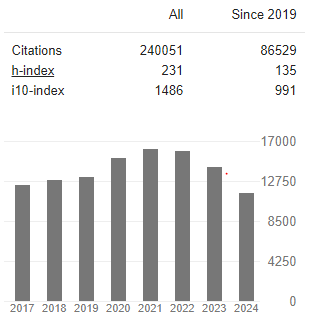Rn-222 Activity Concentration and Age-Dependent Annual Effective Dose Analysis of Drinking Water Sources in Southern Benue State, Nigeria.
Abstract
Andrew Ichoja, O.O. Agboola, E. Danladi, S. Hashim, N. Habila and E. O. Adejo
Radon is one of the carcinogenic radioactive gases causing radiological risk to the public via ingestion and inhalation. The 222Rn activity concentrations were estimated in potable water of Benue South (Otukpo and Ado Local Government Areas) using the Tri-Carb 1000 Liquid Scintillation Counter (LSC). 222Rn activity for Ado and Otukpo LGAS ranged from 2.281±1.861 to 27.525±1.861 Bq/L with a mean value of 10.031±1.861 Bq/L and 2.115±0.689 to 11.367±0.689 Bq/L with an arithmetic mean of 7.574±0.689 Bq/L respectively. The radon levels are within the reference level of 100 Bql−1 proposed by the WHO and EU Commission. Nearly 33% of the potable water had radon activity levels exceeding the maximum contamination level of 11.1 Bql−1 proposed by USEPA. The annual average ingestion dose values are lower than the action level of 100 μSvy−1 as proposed by the WHO and EU Commission. The values of dose variations of Annual effective dose (AED) to individuals were found to increase with age and water consumption rates. The estimated mean radio sensitivity for the different age groups followed a decreasing trend of Adults>Children>Infants in both Ado and Otukpo LGAs. The radiation dose for inhalation received by individual lungs from consumption of radon in water samples from Ado and Otukpo LGAs was significantly higher than the corresponding radiations received by the walls of the stomach. In conclusion, there is a possible occurrence of cancerous bronchial epithelium than stomach cancer over time in the study areas due to the consumption of water.



